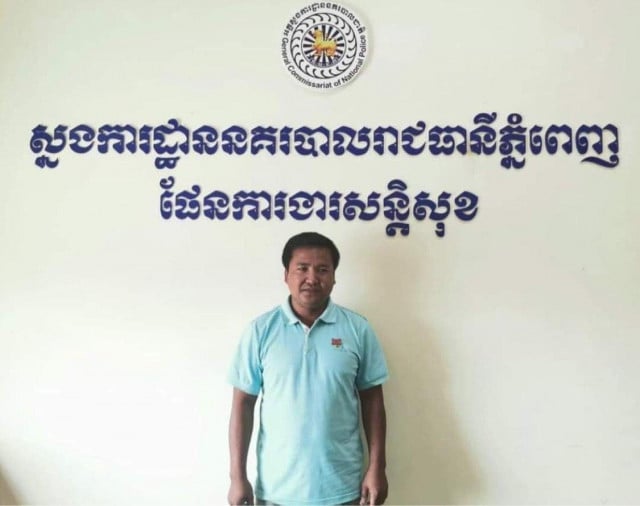Protect biodiversity to reduce future pandemics

- Björn Häggmark, Nick Beresford and Moeko Saito Jensen
- July 22, 2020 8:24 AM
Human over-exploitation of natural resources may well increase the risk of future pandemics.
As the world scrambles to find a cure for the COVID-19 virus, the last few months have highlighted how closely connected we are to nature. A healthy, species-rich ecosystem protects us from diseases, as there is ample space to coexist with nature. Conversely, homogenous species populations in fragmented habitats encroached on by human development, are ideal pandemic breeding grounds.
According to a range of experts and the World Health Organization, there is strong evidence that COVID-19 originated in bats. How the virus moved from bats to humans is still unclear, but many believe an intermediate host was involved.
The only other wildlife species known to be living with coronaviruses, similar to COVID-19, are pangolins – a scaly mammal that looks like an anteater. It so happens that pangolins are also the most illegally traded mammal in the world (IUCN). Markets where live wildlife is traded have been implicated in previous outbreaks of coronaviruses, such as SARS.
While loss of biodiversity may have given rise to the pandemic, COVID-19 has in turn exacerbated the pressure on ecosystems. The pandemic has created spikes in deforestation rates and poaching of rare and endangered species, across several continents. In addition, millions of migrant workers are returning home to rural areas, after losing jobs in cities or neighboring countries, due to the pandemic. The search for money and food is becoming desperate. Plummeting ecotourism across the world means that financial resources needed to protect wildlife are missing. People enter the forests to cut trees, hunt animals, and fish. Fighting to survive, it is understandable that they may not care that their prey is endangered.
Two months ago, In April, nine endangered rhinos were found dead in South Africa. Their bodies had been left on the ground with only the horns, worth more than US$50,000/kg on the black market, removed. In the same month, Cambodia reported the killing of three critically endangered Giant Ibises in its protected areas.
Experts point out that human interference and the loss of such biodiversity lends itself to increased risks of future pandemics. At the same time, biodiversity protection also needs to address the fundamental needs of struggling people. So, what can be done?
There are promising examples. Pakistan pays the unemployed to plant trees and work for biodiversity conservation. In Cambodia, UNDP, in collaboration with the Embassy of Sweden and the Ministry of Environment, is preparing a COVID-19 response package that will financially support rural communities in biodiversity conservation. The COVID-19 response package builds on ongoing green financing initiatives such as REDD+ (Reducing Emissions from Deforestation and Forest Degradation) and Payments for Ecosystem Services and Biodiversity Financing. In different ways, these initiatives promote conservation and sustainable management of natural resources, while also supporting local communities.
Cambodia has created a framework for REDD+ at the national level. It includes a strategy and action plan, national forest monitoring systems, and a set of safeguards, to conserve natural habitats and biodiversity.
Two projects in the protected forests of Seima and the Cardamoms have already generated over US $10 million from the private sector that has been shared with authorities and local communities, to support rural livelihoods, improve forest management, and conserve biodiversity.
Meanwhile, Cambodia is also developing what are known as Payments for Ecosystem Services (PES). This initiative will mobilize money from the major users of ecosystem resources, such as water, clean air and scenic beauty, in order to finance activities that protect and restore ecosystems and biodiversity.
In countries like Costa Rica, such initiatives have been used to engage local communities in conserving upstream forests and biodiversity. Their efforts are paid with taxes and fees collected from downstream users and the private sector. With assistance from Sweden, Cambodia is currently implementing pilot projects to conserve the important watersheds of two protected areas, Kbal Chay and Kulen Mountain. It is vital to scale up these initiatives and to secure increased funding from the national budget, as both local people and tourism are dependent on steady access of fresh water.
Cambodia has strengthened its national environmental education programmes to improve the understanding of the intimate relations between society and its natural surroundings. Our hope is that the younger generations will push towards sustainable and more harmonious ways of living with nature. Among many benefits, this will also minimize the chances of future pandemic outbreaks across the planet.
We cannot undo the devastating suffering that the COVID-19 pandemic has caused. But by investing to protect biodiversity, we can help ensure that the future is safer, more resilient and sustainable.
Björn Häggmark, Ambassador of Sweden to Cambodia
Nick Beresford, Resident Representative, United Nations Development Programme in Cambodia
Dr Moeko Saito Jensen, Environmental Policy Specialist, United Nations Development Programme in Cambodia















